[2] 李彦林.关节镜外科进展[J].昆明医学院学报,2011,32(5): 1-3.
[3] 白洋,蒋电明.骨科深静脉血栓的预防研究进展[J].现代医药卫生,2015,31(16):2455-2458, 2459.
[4] 王宁科,李晓声.骨科关节置换术后深静脉血栓防治的研究进展[J].医学临床研究,2014,31(3): 545-547,548.
[5] 杨扬,齐宝庆.下肢深静脉血栓的诊治进展[J].内科,2009, 4(5):754-757.
[6] Houman FM, Lopes RD, Stashenko GJ, et al. Treatment of venous thromboembolism: guidelines translated for the clinician. J Thromb Thrombolysis. 2009;28(3): 270-275.
[7] NICE. Venous thromboembolism: reducing the risk. NICE clinical guideline 92. London: National Institute for Health and Clinical Excellence. 2010.
[8] Butani D, Waldman DL.Catheter directed thrombolvsis for iliofemoral deep vein thrombosis. Oper Tech Gen Surg. 2008;10(3):143-148.
[9] 黄萍,赵晶.骨科术后患者下肢深静脉血栓的危险因素及预防研究进展[J].护理学杂志, 2015, 30(4): 110-112.
[10] 李少斐,赵建宁,郭亭,等.围关节置换期并发血栓的诊断与治疗[J].中国组织工程研究, 2013,17(48):8401-8406.
[11] 吕厚山,徐斌.人工关节置换时候下肢深静脉血栓形成[J].中华骨科杂志,1999,19(3):155-160.
[12] Colwell CW. Rationale for thrombopmphylaxis in lower joint arthroplasty. Am J Orthop.2007;36:11.
[13] 厉驹,童培建,杜文喜,等.基于Caprini风险评估的股骨转子间骨折围手术期抗凝策略的探讨[J].中华创伤骨科杂志,2010,12(12):1126-1129.
[14] Caprini JA, Arcelus JI, Hasty JH, et al.Clinical assessment of venous thromboembolic risk in surgical patients.Semin Thromb Hemost.1991;17:304-312.
[15] Caprini JA.Thrombosis risk assessment as a guide to quality patient care. Dis Mon.2005;51(2-3):70-78.
[16] Caprini JA.Risk assessment as a guide to thrombosis prophylaxis. Curr Opin Pulm Med. 2010; 16(5):448-452.
[17] Geerts WH, Heit JA, Clagett GP, et al. Prevention of venous thromboembolism. Chest.2001;119: 132S- 175S.
[18] Gould MK, Garcia DA, Wren SM, et al. Prevention of VTE in nonorthopedie surgical patients: Antithrombotic Therapy and Prevention of Thrombosis. 9th ed: American College of Chest Physicians Evidence. Based Clinical Practice Guidelines. Chest. 2012;141: e227S-e277S.
[19] 中华医学会骨科学分会.中国骨科大手术静脉血栓栓塞症预防指南[J].中华骨科杂志, 2009,29(6): 602-604.
[20] 吴疆,李忠廉,王志斌,等.膝关节镜术后下肢深静脉栓塞情况分析[J]. 天津医药, 2011,29(3):277-278.
[21] Stringer MD, Steadman CA, Hedges AR, et al. Deep-vein thrombosis after elective knee surgery: an incidence study in 312 patients. J Bone Joint Surg Br.2009;71(5):492-497.
[22] van Adrichem RA, Nelissen RG, Schipper IB, et al. Risk of venous thrombosis after arthroscopy of the knee: results from a large population-based case-control study. J Thromb Haemost. 2015;13(8): 1441-1448.
[23] Sun Y, Chen D, Xu Z, et al. Deep venous thrombosis after knee arthroscopy: a systematic review and meta-analysis. Arthroscopy. 2014;30(3):406-412.
[24] Maletis GB, Inacio MC, Reynolds S, et al. Incidence of symptomatic venous thromboembolism after elective knee arthroscopy. J Bone Joint Surg Am. 2012;94(8): 714-720.
[25] Ramos J, Perrotta C, Badariotti G, et al. Interventions for preventing venous thromboembolism in adults undergoing knee arthroscopy. Cochrane Database Syst Rev. 2008;(4):CD005259.
[26] Bergqvist D, Jendteg S, Johansen L, et al. Cost of long-term complications of deep venous thrombosis of the lower extremities: an analysis of a defined patient population in Sweden. Ann Intern Med. 1997;126: 454-457.
[27] 张俊丽,蔡卫新,梁建姝,等.3种工具预测不同科室住院病人DVT形成的对比研究[J].护理研究,2015,(17):2146- 2148.
[28] 刘晓涵,卢根娣.国外静脉血栓栓塞症风险评估工具的研究进展[J].护理学杂志,2014,29(12):94-96.
[29] Bahl V, Hu HM, Henke PK, et al. A validation study of a retrospective venous thromboembolism risk scoring method. Ann Surg. 2010;251(2):344-350.
[30] Pannucci CJ, Bailey SH, Dreszer G, et al. Validation of the Caprini risk assessment model in plastic and reconstructive surgery patients. J Am Coll Surg.2011; 212(1):150-112.
[31] Zakai NA, Wright J, Cushman M. Risk factors for venous thrombosis in medical inpatients: validation of a thrombosis risk score. J Thromb Haemost.2004;2: 2156-2161.
[32] Arcelus JI, Candocia S, Traverso CI, et al. Venous thromboembolism prophylaxis and risk assessment in medical patients. Semin Thromb Hemost. 1991;17: 313-318.
[33] Pannucci CJ, Barta RJ, Portschy PR, et al. Assessment of postoperative venous thromboembolism risk in plastic surgery patients using the 2005 and 2010 Caprini Risk score. Plast Reconstr Surg.2012;130(2):343-353.
[34] Obi AT, Pannucci CJ, Nackashi A, et al. Validation of the Caprini Venous Thromboembolism Risk Assessment Model in Critically Ill Surgical Patients. JAMA Surg.2015;150(10): 941-948.
[35] 刘晨,王静,姚建华,等. 膝关节术后下肢深静脉血栓的危险因素[J]. 解放军医药杂志,2013,25(9):48-51.
[36] 刘晓峰,董江涛,陈百成,等. 膝关节镜下交叉韧带重建术后下肢深静脉血栓的临床研究[J]. 中国矫形外科杂志, 2012,20(18):1643-1646.
[37] 周海霞,唐永江,王岚,等. Caprini风险评估模型筛选内科住院患者静脉血栓栓塞症的有效性[J].中华医学杂志, 2013,93(24):1864-1867.
[38] 张晓勤,何丹,黎嘉嘉,等. Caprini血栓风险评估量表评估重症住院患者静脉血栓栓塞风险的有效性研究[J].四川大学学报(医学版),2015,46(5):732-735.
.jpg)
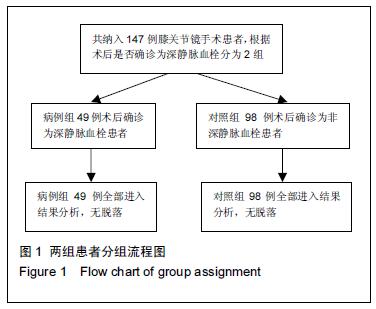
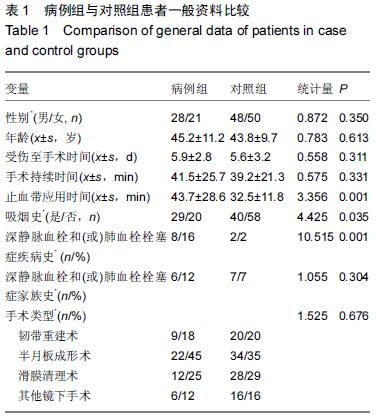
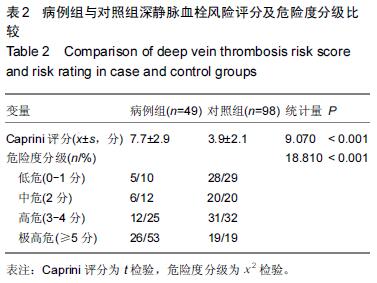
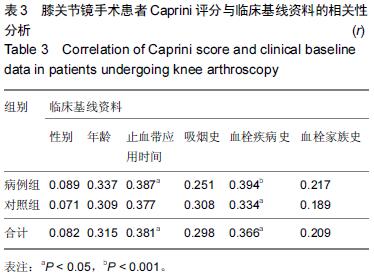
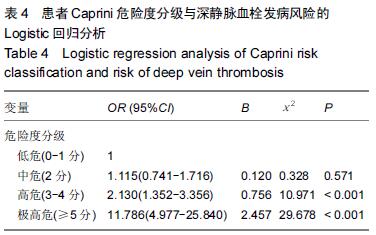
.jpg)